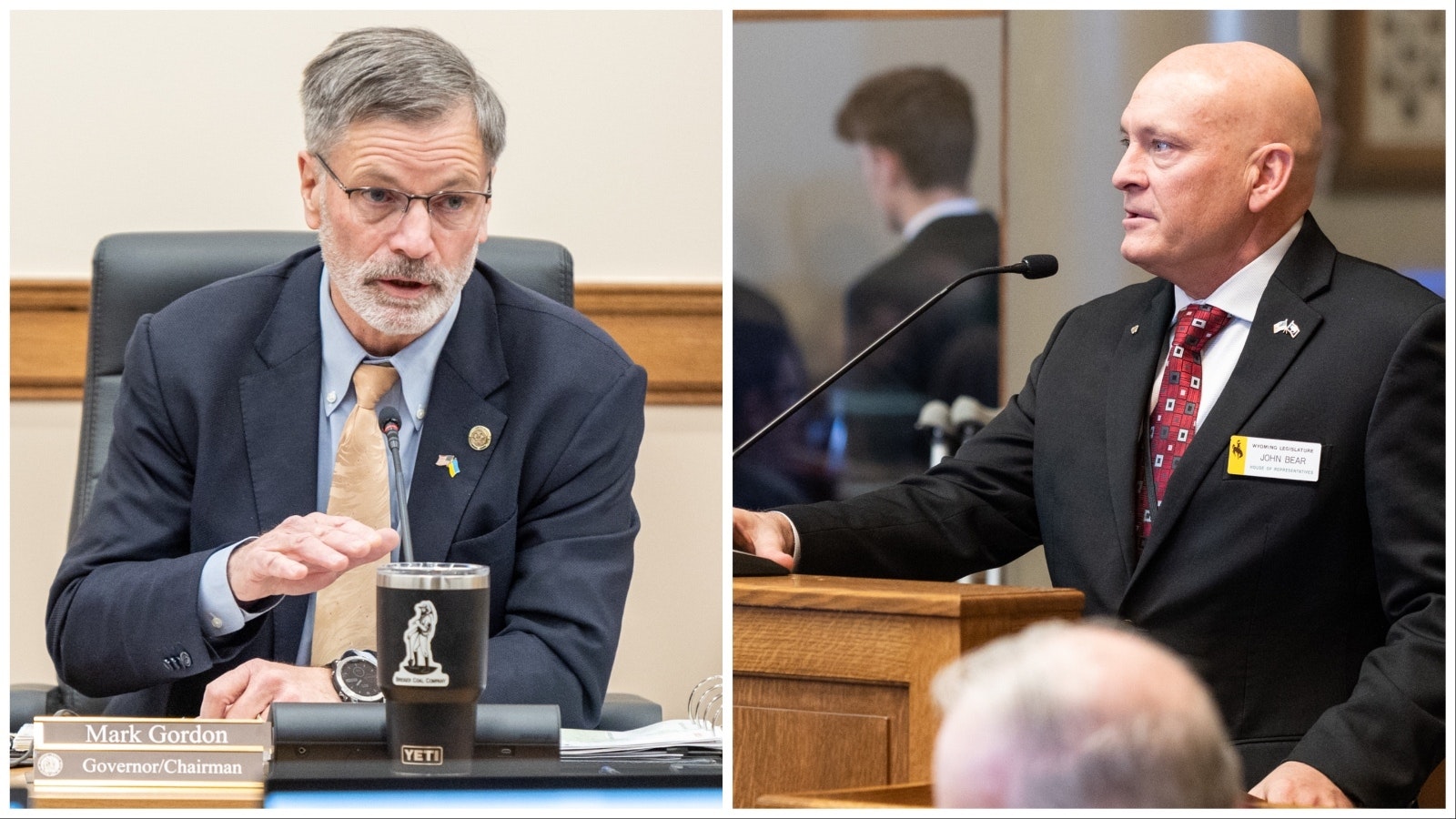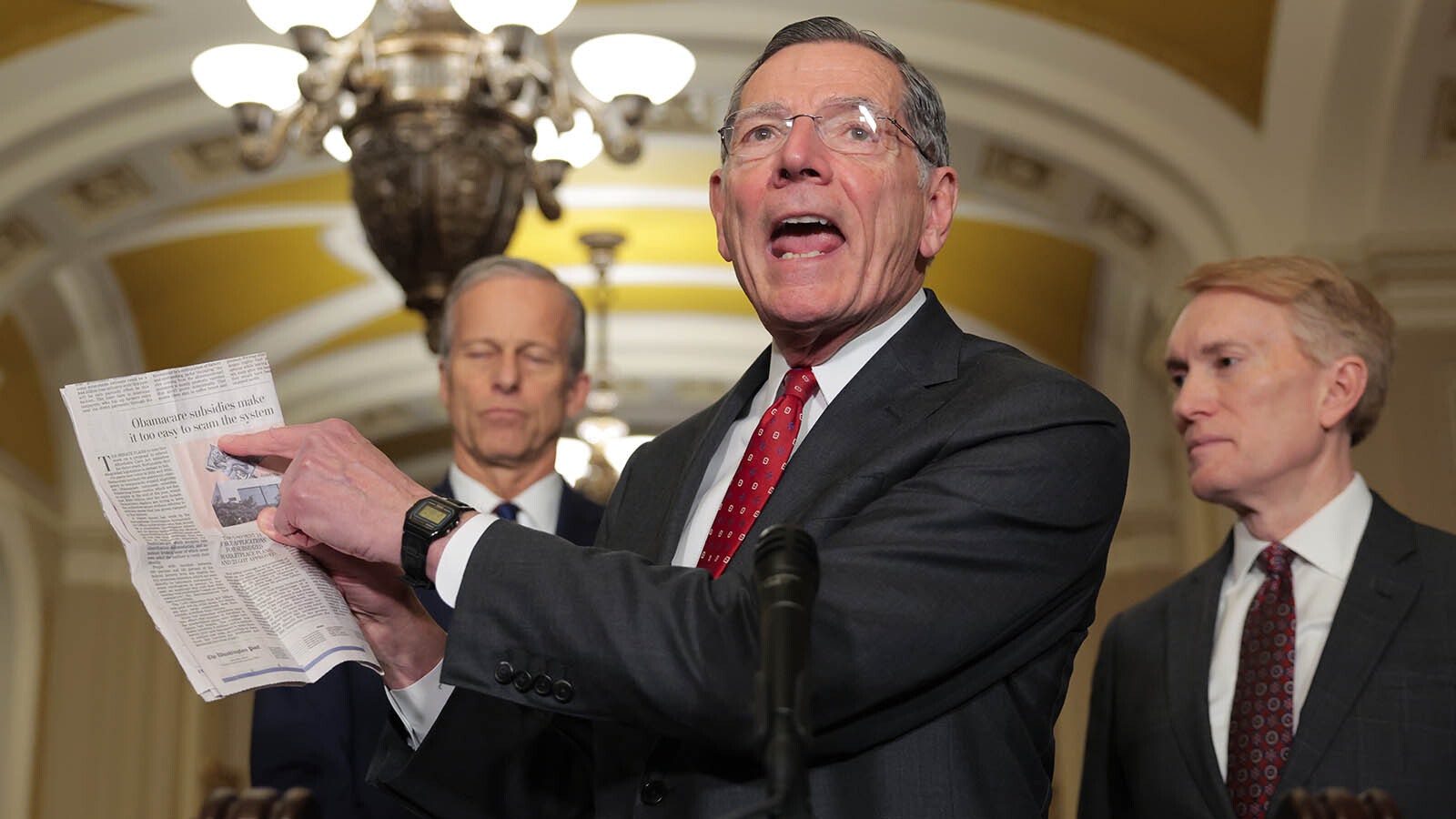In a Thursday guest column for Cowboy State Daily, four members of the Wyoming Freedom Caucus accused Gov. Mark Gordon of pushing an “unaffordable” and “unsustainable” proposed budget for the 2024 legislative session, which begins Monday.
Michael Pearlman, a spokesperson for Gordon, said the Freedom Caucus’ claims contain factual errors, and is “misleading” and “vague.”
The Budget
The Freedom Caucus column — signed by state Reps. John Bear, R-Gillette; Tony Locke, R-Casper; Scott Heiner, R-Green River; and Ben Hornok, R-Cheyenne — claims Gordon’s proposed budget submitted to the Legislature’s Joint Appropriations Committee in November represents the largest budget in Wyoming state history at $10.8 billion, a 12% increase from the previous biennial budget.
“That number is misleading,” Pearlman said.
Pearlman said people should solely focus on the state’s general fund expenditures instead of the entire budget, which includes federal money provided to the state and revenue from various taxes and fees.
The governor has much less flexibility in the way that money is spent, and ultimately it’s the Legislature that gets the final say over the entire budget.
Bear disagrees, saying that it doesn’t matter whether it’s federal or state money, it all has the same source: regular folks.
“All the monies from all governments come from the taxpayers,” Bear said. “It’s all ending up as spending that affects the taxpayers.”
Although Gordon originally proposed a $9.9 billion overall budget in November, he’s since submitted $900 million worth of updates.
Save It Or Give It Back
When factoring in the updates for the 2025-26 biennium, the governor’s recommended budget for the general fund is $3.8 billion. Although that’s more than the $2.7 billion he oversaw once taking office in 2019, it’s still lower than the $4.1 billion tally for the current biennium.
The Joint Appropriations Committee approved all but 8%, or $35 million, of Gordon’s proposed budget. It’s also dedicating $310 million for savings.
The governor is actually recommending $530 million to be put in savings, Pearlman said, adding that will help prevent future tax increases.
“While the letter writers speak about spending, the governor supports record amounts of permanent savings to keep taxes low in the future,” Pearlman said.
Bear said he would rather see fewer property taxes levied on Wyoming residents rather than the state putting more money into savings.
“That way people would have more money to spend and help the Wyoming economy,” he said. “I’d rather not take the money in the first place.”
The revenue from property taxes mostly go to schools and local city and county governments in Wyoming.
The Inflation Effect
According to the Freedom Caucus op-ed, the Legislative Service Office has determined that maintaining the same level of services would require a total budget of $8.7 billion, a $2.1 billion difference from Gordon’s proposed budget.
“In other words, the governor’s frugal, fiscally conservative and practical budget is 24% more than what the LSO says is needed to provide the same level of service as provided in past years,” the op-ed says.
Pearlman said the growth of the budget from prior years is a reflection of the impact inflation has had on the Wyoming state government, just as it has increased costs on Wyoming families.
From the proposed budget, Pearlman said $5.7 billion would be used to pay local businesses to provide services for Wyoming residents and local schools.
Bear said when factoring in inflation, people should instead consider that Wyoming incomes have not grown at the same rate as inflation.
The average median monthly income in Wyoming for the first quarter of 2024, according to the Wyoming Department of Workforce Services, was $4,961. In the first quarter of 2020, shortly prior to the start of the COVID-19 pandemic, the median monthly salary was $4,038, representing a growth rate of 18.7% over nearly three years.
“If they’re (wages) not going up, should government’s grow?” Bear questioned. “What does that do to the taxpayer?”
According to data from Wyoming Administration and Information, state employee wages have grown at a nearly identical 18.8% rate during that same time frame.
Pay Raises
The Freedom Caucus writers say that if the budget is approved, state employees will see a 30% increase in total compensation during Gordon’s tenure over the last budget created by former Gov. Matt Mead.
“How many of you have seen your total compensation packages increase 30% in the last five years?” the op-ed says.
In the upcoming budget, Gordon is proposing $1.4 billion for personnel costs. Before he took office, that number was $1.29 billion, representing an increase of about 12%.
According to the U.S. Bureau of Economic Analysis, wages in the U.S. increased 6.7% in December 2023 from the same month in the previous year. Wage growth in America has averaged 6.1% annual growth from 1960 until 2023.
“We are right in line or behind the average for Americans,” Pearlman said.
The Freedom Caucus op-ed also mentions how Gordon’s proposal contains a $166 million increase in personnel costs for 6,900 state employees, equating to a $12,000 per year pay bump for each employee in the form of increased salary, health insurance coverage and pension contributions.
Pearlman said although these numbers are accurate, they’re presented in a misleading manner.
It was not until 2022, three years into his time as governor, that Gordon made his first proposal for employee raises. At this time, the state was paying below 2017 market average wages, 38% of state employees reported having to work a second job and 3% of state employees still had to seek out welfare services, Pearlman said.
He said this led to massive vacancies and rampant turnover, most visible among the ranks of Wyoming Highway Patrol, Department of Transportation, Department of Family Services, Office of Public Defender and state nursing staff.
“We have only now started to stem the hemorrhaging,” Pearlman said.
Other Expenditures
The op-ed also accuses the governor of devoting $38 million to affordable housing. This is in reference to the $38 million Gordon dedicates to the Wyoming Business Council for its Business Ready Community Grant and Loan Program.
This program can be used for publicly run affordable housing, but also can entail financing for any kind of publicly owned infrastructure deemed to serve the needs of businesses and promote economic development in a community.
Other investment proposals that the Freedom Caucus brings up that the governor defends is a $21.8 million request for a new law enforcement shooting range and $7.5 million proposal for a new helicopter base for fighting wildland fires.
The new range would be a reconstruction of the gun ranges at the Wyoming Law Enforcement Academy.
“The governor supports law enforcement and believes they should have a safe training facility,” Pearlman said. “The deterioration of existing berms and residential development in the surrounding area make this an important training and public safety issue for those who support law enforcement in Wyoming. “
The new helicopter base would be an update of the state’s current base for fighting wildland and forest fires.
“The current helibase is aging and expensive to maintain, with firefighters working out of FEMA trailers,” Pearlman said. “The governor believes in the importance of investing in our ability to fight wildfires.”
Leo Wolfson can be reached at leo@cowboystatedaily.com.





